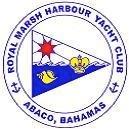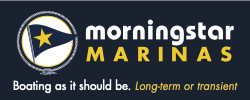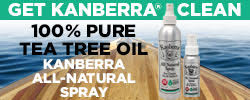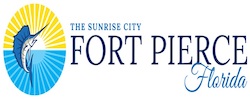Roger Long Responds to Georgia’s HB 201
Roger Long is an experienced cruiser who, along with several others, has submitted comments to the Georgia Department of Natural Resources in response to HB 201. Cruisers Net invites you to make your own response to the addresses shown in Georgia’s HB 201 before Monday, June 17.
Comments to the Georgia Department of Natural Resources on Rule Making for Coastal Marshland Protection and Boating Regulations.
As the former Harbormaster of Cape Elizabeth, Maine I was charged with supervising anchoring and mooring in that town. Since retirement, I have cruised over 40,000 miles between Halifax, Nova Scotia and the Florida Everglades with a dozen transits of the ICW and extensive exploration of Georgia’s waters. I have thus had the opportunity to view the anchoring question from both sides and followed the decades long controversy and legal actions over anchoring in Florida. I have been asked to advise other commenters on the proposed Georgia regulations.
I strongly endorse the position, widely expressed in social media, and in the drafts of comments to your agency which I have been permitted to review, that the proposed rules as published
would be damaging to the overall interests of Georgia. Rather than comment on specifics of the proposed rules, which I think will be adequately covered by many others, I would like to offer a background analysis of anchoring issues to help the DNR reach a clarity that was lacking in the Florida processes as well as in discussions since the issue arose in your state.
Anchoring is a protected activity under well established common law as part of navigation. Restrictions must show an over riding public interest such as safety, not impeding other’s navigational rights, and (increasingly) environmental concerns. The long standing and court upheld status of anchoring has been often cited in relation to issues of vessels being abandoned or stored long term in navigable waters. The point that has seldom surfaced is that the most essential element of a vessel engaged in navigation is a crew. If there are no people aboard, the vessel can not be considered to be navigating and the state has greater latitude in regulating the craft’s use of a public resource.
A state could probably prevail in court on challenges to a rule that required that vessels at anchor always have a crew aboard capable of handling and moving the vessel if the anchor drags. I am only pointing out that the state has this option and a not advocating it. The fact that the state could do this does not mean that it should. There would be a huge backlash from boaters and it would be a very damaging to businesses along Georgia’s waterway. There are places in the state where people anchor to go ashore, spend money in local businesses, and hike in state parks and the National Sea Shore. These activities benefit the state economically and increase public support for protecting the unique and special environment of Georgia. Many cruisers already avoid the state by taking the outside route due to its navigational challenges. Any general restrictions on anchoring, paperwork (even if free), or even just the perception that interaction with law enforcement may be needed to justify a routine navigational operation, will increase this avoidance with resulting economic harm.
Even though vessels anchored so that the entire crew may go ashore are no longer navigating in the strictest sense of the word, it would be in the interest of Georgia to recognize the intermediate status of an “Attended Vessel”. The crews of vessels anchored in places like St. Marys may have left their vessel unoccupied but they are still generally in a position to monitor the weather and return within a short time period to deal with anchors dragging or other problems. If the crew of the vessel is far away, unable to return in a fairly short time period, and unable to be contacted, the vessel is neither navigating nor attended and the state has much greater latitude in regulating it. I would endorse a regulation that requires vessels anchored and unoccupied to post a phone number on a portlight or window where the owner may be contacted. Even if law enforcement is not involved, the ability of a nearby vessel to contact the owner could prevent or mitigate damage to the vessel, other vessels, shore structures, and the environment in the event of the anchor(s) dragging.
As both a former harbormaster and life long cruiser, I do not believe that unoccupied or unattended vessels should be left at anchor for more than very short periods. Anchors are most prone to breaking out and dragging when the current reverses. This is especially true in Georgia with its high tides and fast currents. Monitoring and returning to a vessel is more difficult in the dark and any “attending” crew ashore are likely to be asleep. It would be legally supportable to require that any vessel anchored overnight be occupied by a crew capable of handing the anchors and moving the vessel. In order to avoid economic damage to the state by denying cruisers the ability to dine or visit ashore while anchored, and the resultant avoidance of the state by many, I would propose that “overnight” be defined as between the hours of midnight and dawn. Establishing that unoccupied vessels may not be anchored between those hours would have little impact on either transient or local cruisers and would give the state an immediate handle for dealing with improperly stored and abandoned boats that are at risk of becoming derelicts.
Vessels anchored but neither occupied nor attended should be in a marina, tied to a dock, or on a mooring. Moorings are rare in Georgia and most of the discussions I have seen in both states have lacked clarity on the important distinctions between anchors and moorings. It is much more than just a difference in the kind of gear used to secure the vessel to the bottom.
Anchors are designed and intended to be deployed and retrieved by a vessel and carried aboard as an essential part of navigation. As such, compromises need to be made with their weight and holding power so that they may be handled. Moorings are heavier, semi-permanent installations that must normally be installed by a larger vessel dedicated to the purpose. Moorings are significantly less prone to dragging, generally immune to the effects of current shifts, and capable of securing the vessel against more severe weather events.
I have seen comments and opinions in both states that waterfront property owners will want to “anchor” their boats in front of their houses and that anchoring restrictions would prevent that. However, most property owners will actually want to have a mooring. It is much more convenient to pick up or drop the rope on a mooring buoy than to haul up and deploy an anchor. The mooring will also reserve their spot so they will be sure of it being available when they return. The vessel will be much more secure if the owner leaves for an extended period.
Anchors further differ from moorings in that a vessel takes its gear with it when it leaves whereas a mooring continues to occupy and restrict the use of a portion of a public resource when the vessel is absent. Since a mooring can not be considered a part of a vessel’s navigational equipment, a vessel on one is not navigating. Mooring are closer in the legal and regulatory scheme to docks than they are to anchors. Moorings appropriate a portion of a public resource for private use (or commercial in the case of a marina) so can and should be regulated by the state. There are recognized standards for mooring gear specifying the size of anchors, chain, and other components relative to vessel size.
A vessel which simply drops an anchor, intended for navigational use and to be carried aboard the craft, and is then left unattended for long periods is not navigating. It would be more accurate to think of it as being moored but with inadequate securing tackle that presents a risk to the vessel, other vessels, shore side structures, and the environment. One approach for the state would be a requirement that any vessel left unoccupied in the water for more than some short time period, say seven days, be either secured to a dock or on a permitted mooring. Insuring that the mooring gear met the recognized standard selected by the state would be part of the permitting process. The regulation could reasonably exempt boats below a certain size, perhaps 18 feet . This approach would increase the safety of all vessels, shore structures, and the environment. It would clearly distinguish boats that are in use from boats that are being stored or abandoned without infringing on the navigational rights of legitimate cruisers. The mooring permit could require vessel owners to agree to removal of their vessel and mooring without notice if the permit was allowed to elapse.
A more difficult issue is the occupied vessel that remains anchored in the same spot for long periods. Since the vessel is occupied, it can claim that it is navigating so long as it has a means of propulsion. At some point however, it becomes clear that the vessel is not engaged in navigation but is residing and being used as a habitation. I believe it would be reasonable, and legally defensible, for the state to require that any vessel remaining in the same location over 60 days obtain a mooring permit. I would define “location” as anchoring within the same anchor circle (radius of seven times the water depth around the original anchor location) and require an absence of seven days with relocation at least a mile away to restart the 60 day period. The exact numbers can be explored.
Finally, I commend Georgia for attempting to clean up and protect the waters which comprise one of the most beautiful areas on the whole east coast. However, I must point out that the huge brouhaha that has erupted over this was the result of failure at both the legislative and rule draft writing level to fully research the issues and understand the constituency effected by them. I urge your agency to issue a second draft of proposed rules followed by an additional comment period and to obtain further advice on the issues I raise above. I was part of a very productive and successful rule making process to create new Coast Guard regulations in which an industry/USCG task force was set up to draft the rules. We educated the Coast Guard, the Coast Guard educated us, and the result was a very workable set of regulations. I would highly recommend such an approach to the Department of Natural Resources.
Roger Long













Be the first to comment!